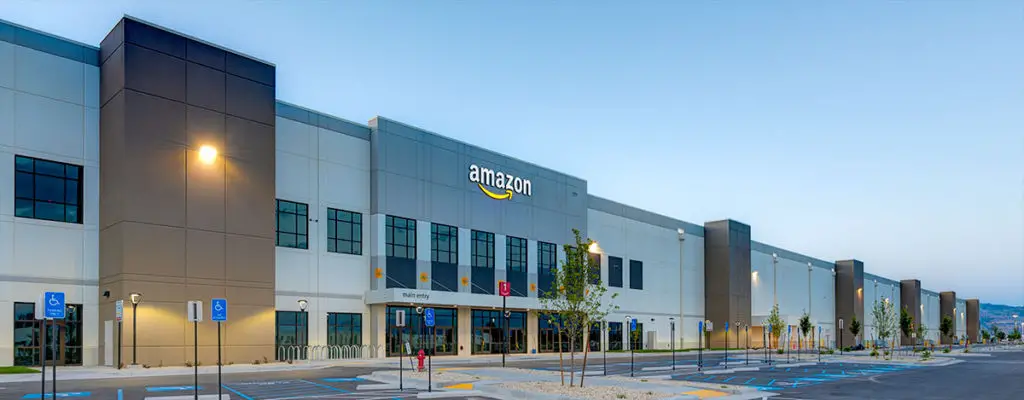Amazon Mission and Vision Statement Analysis

With a market capitalization of over $1 trillion and a presence in more than 200 countries, Amazon is a global leader in technology, innovation, and customer service. In this context, it is important to understand Amazon’s mission statement, vision statement, and core values, which guide the company’s actions and shape its culture. This article will examine each of these statements in detail and analyze what they mean for Amazon and its stakeholders.
About Amazon
Amazon is one of the largest online retailers in the world, founded in 1994 by Jeff Bezos. The company started as an online bookstore but has since expanded into selling a wide range of products and services, including electronics, clothing, and streaming video.
Amazon is known for its fast and reliable delivery, competitive pricing, and popular Prime subscription service, which offers free shipping and other benefits to its members.
Additionally, Amazon has diversified its business by investing heavily in cloud computing, artificial intelligence, and other emerging technologies.
| NAME | Amazon, Inc. |
| FOUNDED | 1994 |
| HEADQUARTERS | Seattle, WA, USA |
| SIC CODE | 5942 |
| STATUS | Public Independent Company of NYSE |
| INDUSTRY SECTOR | eCommerce, Cloud Computing |
| EMPLOYEES | 650,000 |
| TRADING SYMBOL | AMZN |
Amazon Mission Statement
Amazon’s mission statement is: “to be Earth’s most customer-centric company, Earth’s best employer, and Earth’s safest place to work.” It’s a multi-faceted statement that outlines the company’s aspirations to be the best in several areas. Let’s break down each component of the statement to understand its meaning in detail:
- “Earth’s most customer-centric company”: This phrase signifies Amazon’s commitment to putting its customers first. It aims to provide the best possible experience to its customers by offering a vast selection of products, competitive prices, fast and reliable delivery, and excellent customer service. The focus on being “Earth’s” most customer-centric company also implies that Amazon aims to have a global impact and serve customers all over the world.
- “Best employer”: This component highlights Amazon’s desire to be an exceptional workplace for its employees. It seeks to provide a positive work environment, fair compensation, growth opportunities, and a supportive culture. By aiming to be the best employer, Amazon hopes to attract and retain top talent, which can ultimately drive the company’s success.
- “Safest place to work”: The phrase “safest place to work” indicates that Amazon is committed to ensuring the safety and well-being of its employees. It emphasizes the importance of creating a workplace free from physical harm, harassment, or discrimination. By prioritizing safety, Amazon hopes to foster a culture of trust and respect among its employees.
In summary, Amazon’s mission statement reflects the company’s core values of customer obsession, employee satisfaction, and safety.
By striving to be the best in these areas, Amazon hopes to build a strong reputation and maintain its position as a global leader in e-commerce and technology.
Amazon Vision Statement
Amazon does not have an official vision statement, but the company’s founder and CEO, Jeff Bezos, has shared his perspective on Amazon’s long-term vision. In his 2016 letter to shareholders, Bezos wrote, “We will continue to focus relentlessly on our customers, innovate on behalf of them, and invest aggressively in opportunities that enable us to meet and exceed their needs.”
This statement reflects Amazon’s commitment to putting its customers at the center of everything it does. The company strives to anticipate and fulfill the needs of its customers by continuously innovating and investing in new technologies and services. By prioritizing customer satisfaction and innovation, Amazon aims to maintain its competitive edge and continue to grow its business.
In addition to this overarching vision, Amazon has a set of guiding principles that reflect its values and culture. These principles include customer obsession, ownership, a bias for action, frugality, and a focus on long-term thinking. Together, these principles help shape Amazon’s decisions and act as it works towards its long-term vision of being the world’s most customer-centric company.
Amazon Core Values
Amazon’s core values are a set of guiding principles that underpin the company’s culture, decisions, and actions. Let’s analyze each of these values to understand their meaning and significance:
- Customer Obsession: Amazon places its customers at the center of everything it does. This value emphasizes the importance of understanding and anticipating customers’ needs and going above and beyond to exceed their expectations.
- Ownership: Amazon encourages its employees to take ownership of their work and act like owners of the company. This value emphasizes accountability, initiative, and a sense of responsibility for the company’s success.
- Invent and Simplify: This value reflects Amazon’s culture of innovation and its commitment to making things easier for its customers. It encourages employees to think creatively, challenge the status quo, and simplify complex problems.
- Are Right, A Lot: Amazon values decision-making based on data and analysis. This value emphasizes the importance of making informed decisions, testing hypotheses, and learning from mistakes.
- Learn and Be Curious: Amazon values continuous learning and encourages its employees to seek new knowledge and experiences. This value reflects the company’s commitment to innovation and improvement.
- Hire and Develop the Best: Amazon prioritizes hiring top talent and investing in their development. This value reflects the company’s belief that great people are essential to its success.
- Insist on the Highest Standards: Amazon has a culture of excellence and a commitment to delivering high-quality products and services. This value emphasizes the importance of setting and maintaining high standards in all areas of the company.
- Think Big: Amazon encourages its employees to think creatively and aim for ambitious goals. This value reflects the company’s long-term vision and willingness to take risks and pursue bold ideas.
- Bias for Action: Amazon values speed and agility in decision-making and execution. This value emphasizes the importance of taking action quickly and decisively, even in the face of uncertainty.
- Frugality: Amazon values efficiency and resourcefulness and encourages its employees to do more with less. This value reflects the company’s commitment to minimizing waste and optimizing its operations.
- Earn Trust: Amazon values integrity and transparency and seeks to earn and maintain the trust of its customers and stakeholders. This value reflects the company’s belief that trust is essential to building strong relationships and achieving long-term success.
- Dive Deep: Amazon values thoroughness and attention to detail and encourages its employees to delve deeply into issues and opportunities. This value reflects the company’s commitment to data-driven decision-making and its belief that a deep understanding of a problem is essential to finding the best solutions.
Together, these values represent Amazon’s culture and philosophy, guiding the company’s decisions and actions as it works to achieve its long-term goals.
Amazon Mission Statement History
Here is a grouping outline of Amazon’s mission statement history by year from new to old:
- Present day: Amazon’s current mission statement is “To be Earth’s most customer-centric company, best employer, and safest place to work.” This mission statement reflects the company’s focus on customer satisfaction, employee well-being, and safety.
- 2018: In 2018, Amazon updated its mission statement to “To be Earth’s most customer-centric company where people can find and discover anything they want to buy online.” This mission statement emphasized the company’s commitment to customer satisfaction and its focus on providing a wide selection of products.
- 1997: Amazon’s original mission statement, as published in its initial public offering (IPO) prospectus in 1997, was “To be the world’s most customer-centric company, where customers can find and discover anything they might want to buy online.” This mission statement reflected Amazon’s early focus on providing a convenient and user-friendly online shopping experience for its customers.
Over the years, Amazon’s mission statement has evolved to reflect the company’s changing priorities and goals. However, throughout its history, the company’s mission has consistently emphasized its commitment to customer satisfaction and its desire to be a leader in the world of online retail.
Conclusion
In conclusion, Amazon is a company that has established itself as a global leader in online retail and a pioneer in technology and innovation.
The company’s mission statement, vision statement, and core values reflect its commitment to customer satisfaction, employee well-being, and excellence in all aspects of its operations.
From its early days as an online bookstore to its current position as a major player in e-commerce, cloud computing, and artificial intelligence, Amazon has maintained a focus on innovation, growth, and customer service.
As the company continues to evolve and expand, its mission and values will undoubtedly continue to guide its actions and shape its future.
Slogan
Amazon’s slogan is: Work hard. Have fun
Headquarters
Amazon’s main headquarters is in Seattle, Washington, United States
References
- Achtenhagen, L., Melin, L., & Naldi, L. (2013). Dynamics of business models–strategizing, critical capabilities and activities for sustained value creation. Long range planning, 46(6), 427-442.
- Amazon – Home.
- Babnik, K., Breznik, K., Dermol, V., & Trunk Širca, N. (2014). The mission statement: organisational culture perspective. Industrial Management & Data Systems, 114(4), 612-627.
- Barchiesi, M. A., & La Bella, A. (2014). An analysis of the organizational core values of the world’s most admired companies. Knowledge and Process Management, 21(3), 159-166.
- CMPE, T. W. B. (2013). Vision problems?. The Journal of medical practice management: MPM, 29(2), 110.
- Dahlgaard-Park, S. M. (2012). Core values–the entrance to human satisfaction and commitment. Total Quality Management & Business Excellence, 23(2), 125-140.
- Eși, M. C. (2014). The mission statement of the business organisation by reference to the economic market requirements. The USV Annals of Economics and Public Administration, 14(2 (20)), 131-138.
- Madu, B. C. (2013). Vision: The relationship between a firm’s strategy and business model. Journal of behavioral studies in business, 6, 1.
- Rajasekar, J. (2013). A comparative analysis of mission statement content and readability. Journal of Management Policy and Practice, 14(6), 131-147.
- Rosemann, M., & vom Brocke, J. (2015). The six core elements of business process management. In Handbook on business process management 1 (pp. 105-122). Springer, Berlin, Heidelberg.
- Rutherford, M. A., Parks, L., Cavazos, D. E., & White, C. D. (2012). Business ethics as a required course: Investigating the factors impacting the decision to require ethics in the undergraduate business core curriculum. Academy of Management Learning & Education, 11(2), 174-186.
- Salem Khalifa, A. (2012). Mission, purpose, and ambition: redefining the mission statement. Journal of Strategy and Management, 5(3), 236-251.
- Schwartz, M. S. (2013). Developing and sustaining an ethical corporate culture: The core elements. Business Horizons, 56(1), 39-50.
- Ullah, A., & Lai, R. (2013). A systematic review of business and information technology alignment. ACM Transactions on Management Information Systems (TMIS), 4(1), 4.
- Zwetsloot, G. I., Van Scheppingen, A. R., Bos, E. H., Dijkman, A., & Starren, A. (2013). The core values that support health, safety, and well-being at work. Safety and health at work, 4(4), 187-196.



